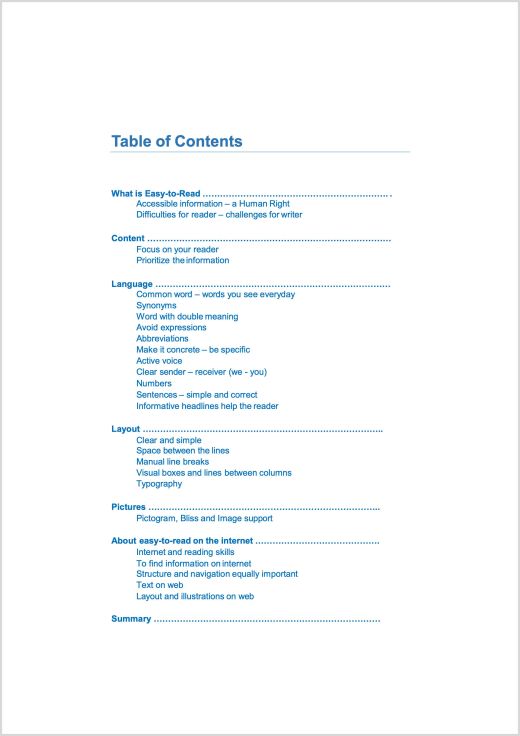This learning material is produced within the Erasmus project Puzzle – developing easy to read formats for people with intellectual disabilities.
Author: Puzzle
From the Summary:
This learning material is produced within the Erasmus project ‘Puzzle – developing easy to read formats for people with intellectual disabilities’. It is part of the project ́s intellectual output learning material and focus on how to implement the easy to read method to write texts that people with intellectual disabilities can read and understand.
Easy-to-read information is easy to find, easy to read and easy to understand for people who have reading difficulties.
It is information that has a clear and logical structure. The text is written with common words. The sentences are short and simple to read and understand. The text is presented with an airy layout, short lines and with pictures that help the reader to understand the content.
To make information easy-to-read you must know your reader, his or her knowledge and interest about the topic. You also must know your subject. In easy-to-read texts you can never hide behind general concepts and a passive voice. Easy-to-read texts are concrete telling who is doing something and not what is being done.
As the writer you are responsible for guiding your reader through the text. You are responsible for leaving out less important information and focus on what is key to know.
It is a human right to have access to information. And, if I have reading difficulties, I have the right to get information in an easy-to-read version!
Read and download the free pdf in your browser, link below.

The publisher is Puzzle.
Easy to Read © Puzzle 2020.
All Rights Reserved. No part of this paper may be reproduced in any form without permission from the publisher except for the quotation of brief passages in reviews.
Inclusion, intellectual disabilities, Global, Paper